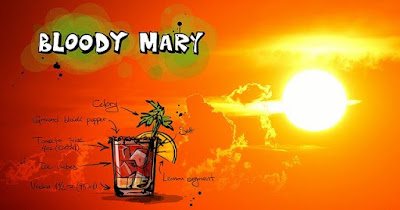Repeal Day is an unofficial holiday in the United States in honor of the end of the prohibition on this date in 1933.
The prohibition was a period between 1920 and 1933 in which alcohol was outlawed throughout the United States.
The Prohibition Act was enacted on January 16, 1919 under the leadership of Andrew Volstead, an American member of the Republican Party from Minnesota, and entered the U.S. Constitution as the 18th Amendment.
It went into effect a year later, on January 16, 1920 and banned the production, transportation and sale of liquor throughout the United States.
crossorigin="anonymous">
style="display:block"
data-ad-format="fluid"
data-ad-layout-key="-g7+t-3o-an+x9"
data-ad-client="ca-pub-8152220688286833"
data-ad-slot="7257876051">
From the moment the law went into effect, the dry season began in the United States.
The reason for enacting the law was the perception that the state should protect the citizens from the bad things they are doing to themselves and alcohol was a major cause of many damages.
For 13 years the drought laws have existed in the US but they have not been able to solve the problem. As you can probably imagine, people like to be free and decide for themselves what is good for them, so many opposed the law and thus developed a "black market" of alcohol that led to an increase in crime.
Mafia organizations began to engage in alcohol smuggling and distribution in a dangerous manner and the capitalists who wanted to return the trade in alcoholic beverages legally pressed the government to repeal the laws.
On December 5, 1933, the 21st Amendment to the United States Constitution was repealed repealing the 18th Amendment and ending the dry season that caused more trouble than good.
Interesting facts about the Prohibition
The United States was not the only country to enact laws against everything to do with alcohol. Russia, Iceland, Norway, Finland, and Prince Edward Island also experienced periods of drought during the 20th century.
Repeal Day is the only holiday in the United States that celebrates a change in their constitution.
The dry laws have contributed to the flourishing of gangster organizations, especially in Chicago which has become a haven for dry law violators. The most famous gangsters, like El Capone and his rival Bugs Moran, made millions of dollars from selling smuggled liquor. By the end of the turbulent 1920s El Capone controlled 10,000 pubs called Speakeasy in Chicago and the liquor business in the area between Canada and Florida.
Speakeasy (also called "Blind Pig" or "Blind Tiger") were institutions that illegally sold liquor. After the repeal of the Dryness Act, Speakeasy disappeared and today the term is used in the United States to describe pubsthat are unfamiliar with an intimate atmosphere, especially those that are far from large entertainment areas.
When the law went into effect, the law enforcement task was assigned to a special police force of 1,520 federal agents.
Many people have paid with their lives for trying to enforce the laws of drought. Eleven U.S. Coast Guard law enforcement personnel were killed between 1925 and 1927 in an attempt to thwart smuggling. In the Ministry of Finance, 56 people were killed between 1920 and 1927 when they tried to interfere with the mafia trading in alcohol. In the Ministry of Justice also 34 people were killed between 1930 and 1934. In addition to law enforcement, thousands of people have died from drinking counterfeit liquor.
crossorigin="anonymous">
style="display:block"
data-ad-format="fluid"
data-ad-layout-key="-g7+t-3o-an+x9"
data-ad-client="ca-pub-8152220688286833"
data-ad-slot="7257876051">
Instead of reducing the scale of crime, the Drought Act turned some cities into battlefields between rival gangs engaged in liquor smuggling. The amount of crime only increased. During the years 1920–1921, acts of theft and burglary increased by 9%, murders by 12.7%, the number of assaults increased by 13%, drug use increased by 44.6% and police expenditure increased by 11.4%. All of these were mostly the result of so-called "black market violence" and the distraction from crimes unrelated to the law of drought.
The Drought Act has managed to change the habits of the population regarding alcohol consumption, but temporarily. It halved consumption during the 1920s but until the 1940s, the level of consumption returned to the level it was before the ban.
How to celebrate Repeal Day?
Go out and celebrate at the bar in the style of Speakeasy as in the 1920s. Find a quiet and intimate neighborhood pub where you can have a drink with friends. Just make sure you have a driver who did not drink after the party.
If you are in the United States, you will see special promotions in honor of the Repal Day.
Try cocktails like Moscow Mule, Margarita, Martini, Manhattan, Daiquiri, Negroni, Old Fashion and more. Do not forget that there are mocktails too! Mocktails are refreshing cocktails that do not contain alcohol and allow you to enjoy a drink without suffering from hangovers and without fogging your senses. If you are under 18, the cocktails are great for you to celebrate Repeal Day.
Happy Repeal Day!
crossorigin="anonymous">
style="display:block"
data-ad-format="fluid"
data-ad-layout-key="-g7+t-3o-an+x9"
data-ad-client="ca-pub-8152220688286833"
data-ad-slot="7257876051">
 |
| Celebrating End of Prohibition - Farewell 18th Amendment |
December 5th is also Ninja Day and Soil Day

















